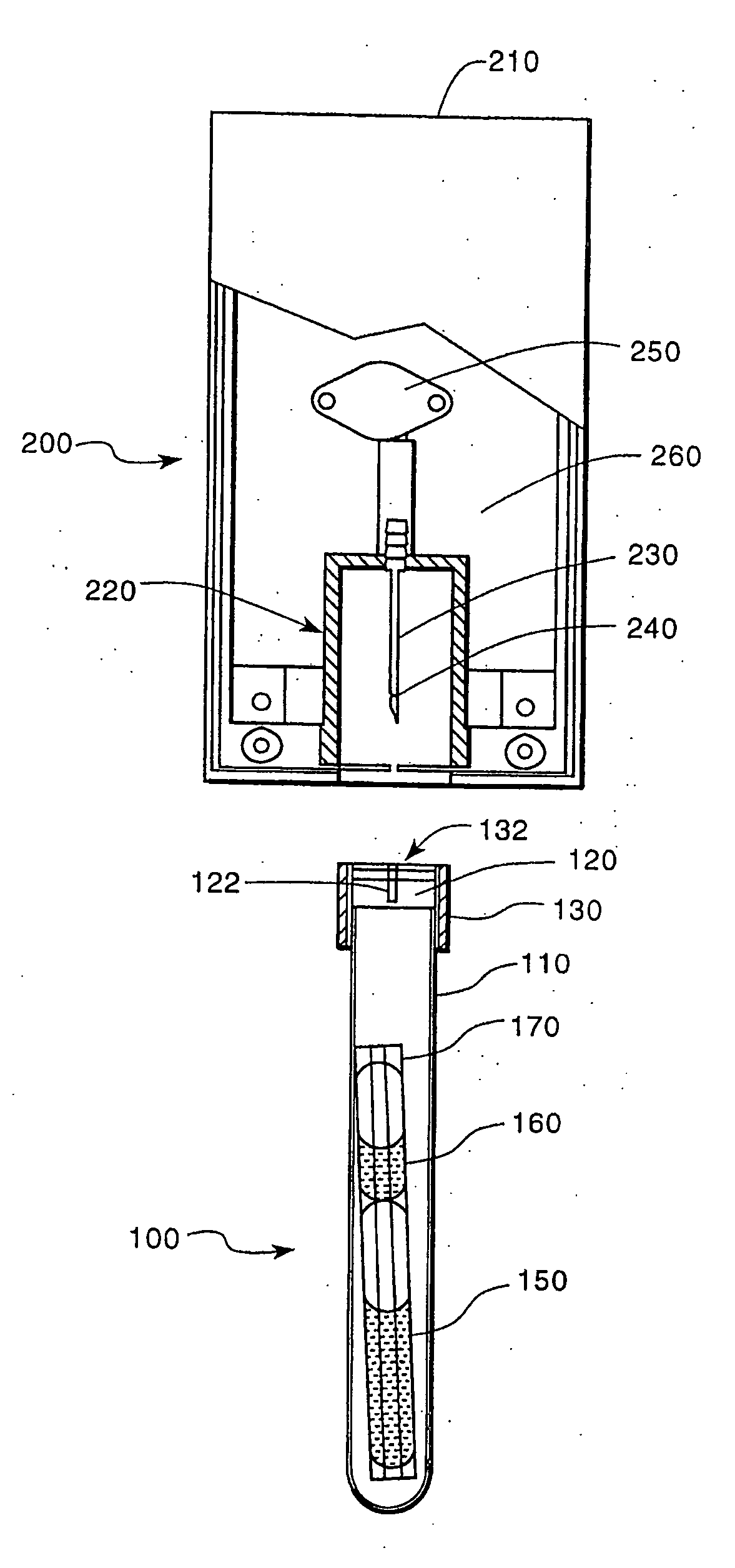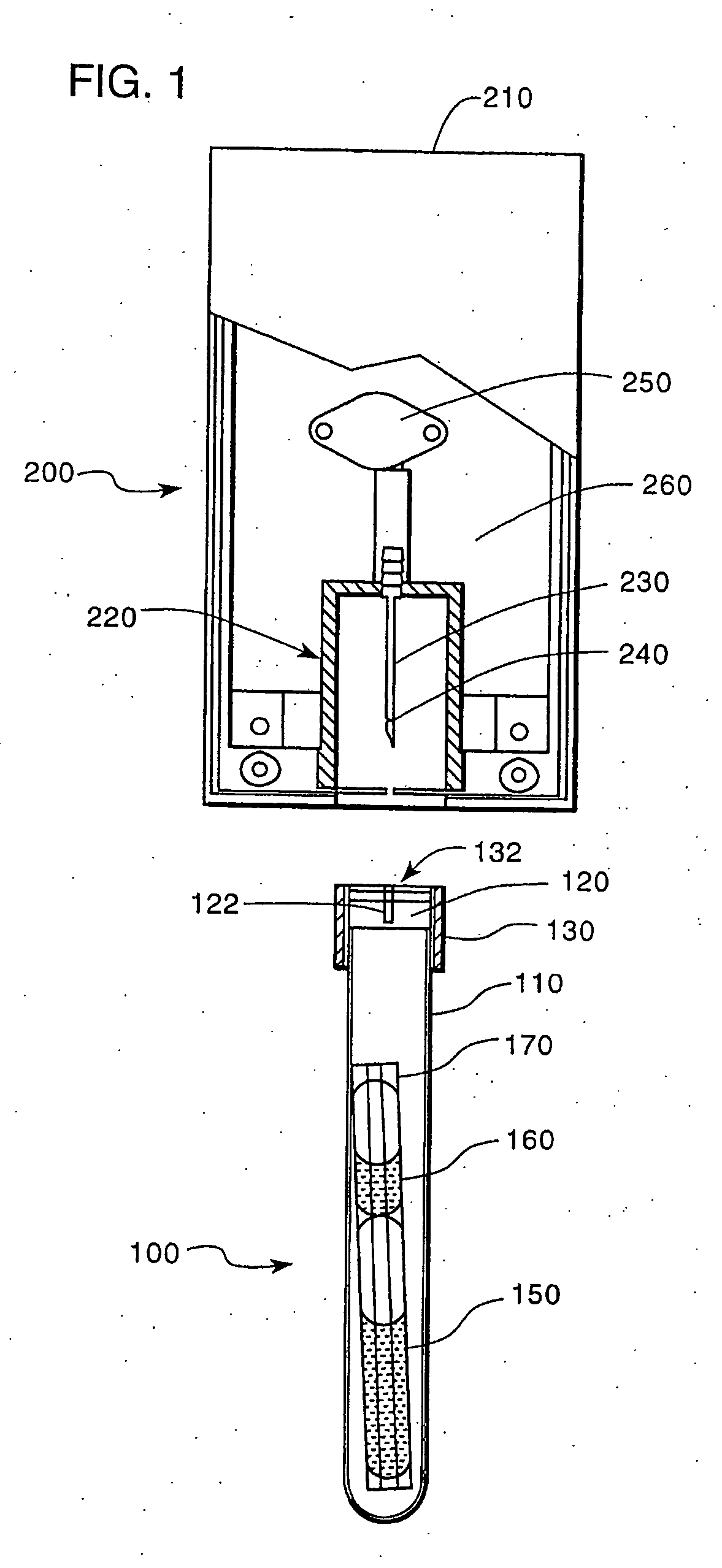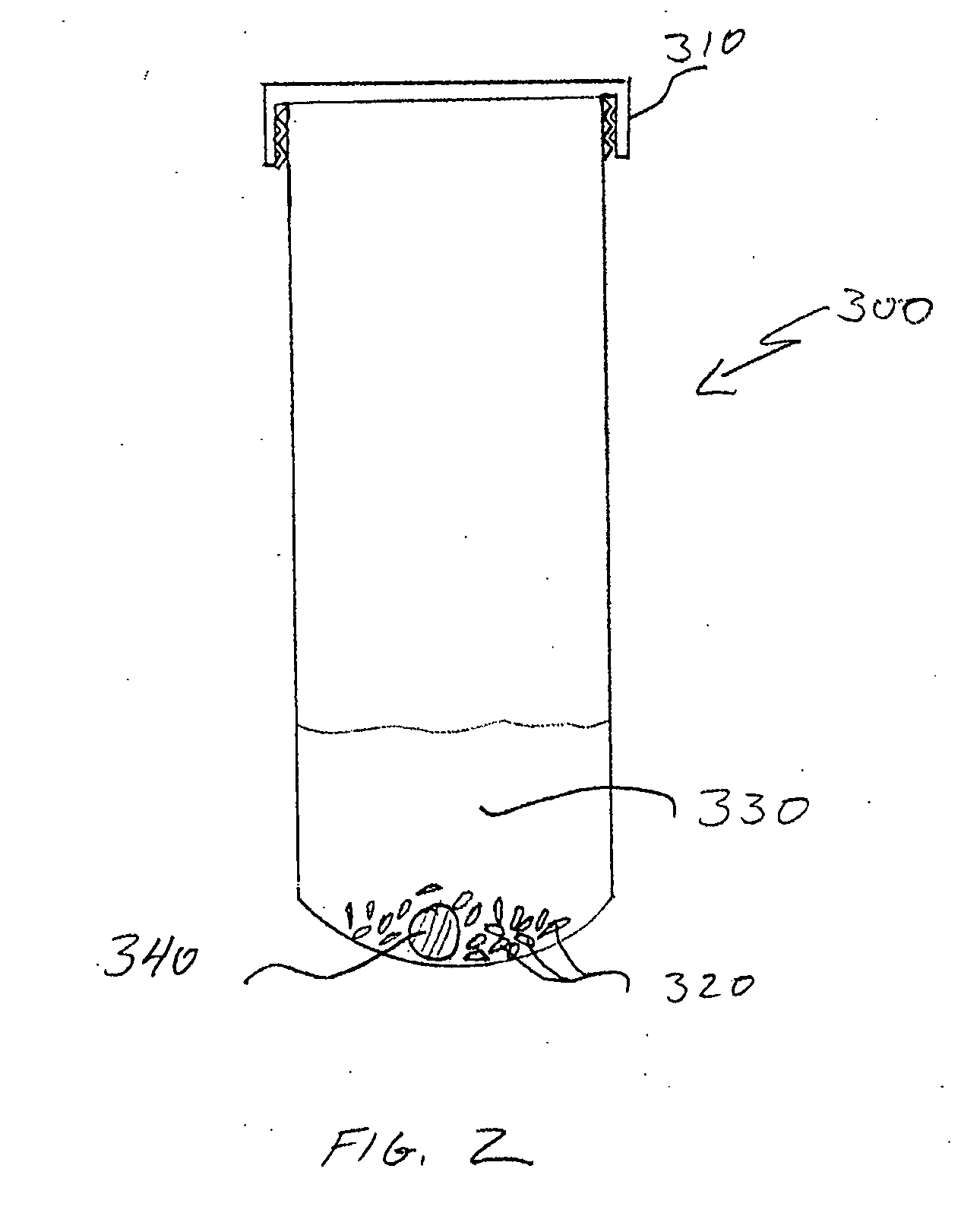Apparatus and method for the detection of water in plants
- Summary
- Abstract
- Description
- Claims
- Application Information
AI Technical Summary
Problems solved by technology
Method used
Image
Examples
example 1
[0039] In the first experiment leaves from Japanese knotweed, or Fallopia japonica (Polygonum cuspidatum), known in Japan as itadori, or “strong plant” and Sycamore maple, Acer pseudoplatanus L. were collected and immediately prepared for analysis. Prior to stacking in groups of five for chopping, the leaf midrib and petiole were removed by folding the leaves (one at a time) along the mid rib and cutting the rib and petiole off. Five leaves were stacked and rolled into a tight cylinder so that they could be cut using sharp scissors, cutting off a scissor-blade width at a time. The chopped leaves were then weighed (approximately 1 gram aliquots) into 50 mL pp soil extraction tubes. Each leaf type was analyzed in triplicate and the remainder was weighed into two aluminum trays for duplicate oven dry gravimetric determinations of water content. The water content determined by the oven-dry technique was deemed to be the actual water content.
[0040] The results shown in Table 1 were achi...
example 2
[0042] The above experiment was repeated using the knotweed (bamboo) leaves in triplicate. This time a ½″ stainless steel ball bearing was added to the extraction tube. The tube was shaken for 6 minutes and allowed to sit for 15 minutes. The extract was again sampled in duplicate and analyzed. The results are tabulated below.
TABLE 3Instru-SampleSampleSamplementWaterPercentStdTypeIDWeightReadingCont. %Ave.RecoveryDevBamboo1bb0.9866567.8Bamboo1bb0.9866868.2Bamboo2bb0.9869971.3Bamboo2bb0.9866167.5Bamboo3bb1.0569265.9Bamboo3bb1.0567864.567.596.82.30
[0043] The above preliminary experiments indicate that the recovery of water from the leaves is substantially complete.
example 3
[0044] To determine the effect of extraction time and the shaking with a ball bearing, an experiment was run on the bamboo leaves varying the extraction times from 5 min to 20 minutes with and without the ball bearings. The results tabulated below indicate that the use of the ball bearings shortens the required extraction time.
TABLE 4Extraction Without Ball BearingWeightShakeExtractmg Watermg WaterPercentbambootimetimetrial 1trial 2WaterAverage1.00683 min 5 min39930939.10.97663 min 5 min38538639.50.992 3 min 5 min38539639.439.30.99163 min10 min46148047.50.999 3 min10 min52750951.91.03363 min10 min50251049.049.41.02573 min20 min62862861.20.99553 min20 min61761962.10.99293 min20 min59660060.261.2Extraction With Ball BearingWeightshakeextractmg watermg waterPercentBambootimetimetrial 1trial 2WaterAverage1.01913 min 5 min70569868.81.00423 min 5 min67567367.10.99643 min 5 min63467265.667.21.01043 min10 min65564264.21.02053 min10 min66067465.41.05183 min10 min67068164.264.6
PUM
 Login to View More
Login to View More Abstract
Description
Claims
Application Information
 Login to View More
Login to View More - R&D
- Intellectual Property
- Life Sciences
- Materials
- Tech Scout
- Unparalleled Data Quality
- Higher Quality Content
- 60% Fewer Hallucinations
Browse by: Latest US Patents, China's latest patents, Technical Efficacy Thesaurus, Application Domain, Technology Topic, Popular Technical Reports.
© 2025 PatSnap. All rights reserved.Legal|Privacy policy|Modern Slavery Act Transparency Statement|Sitemap|About US| Contact US: help@patsnap.com



